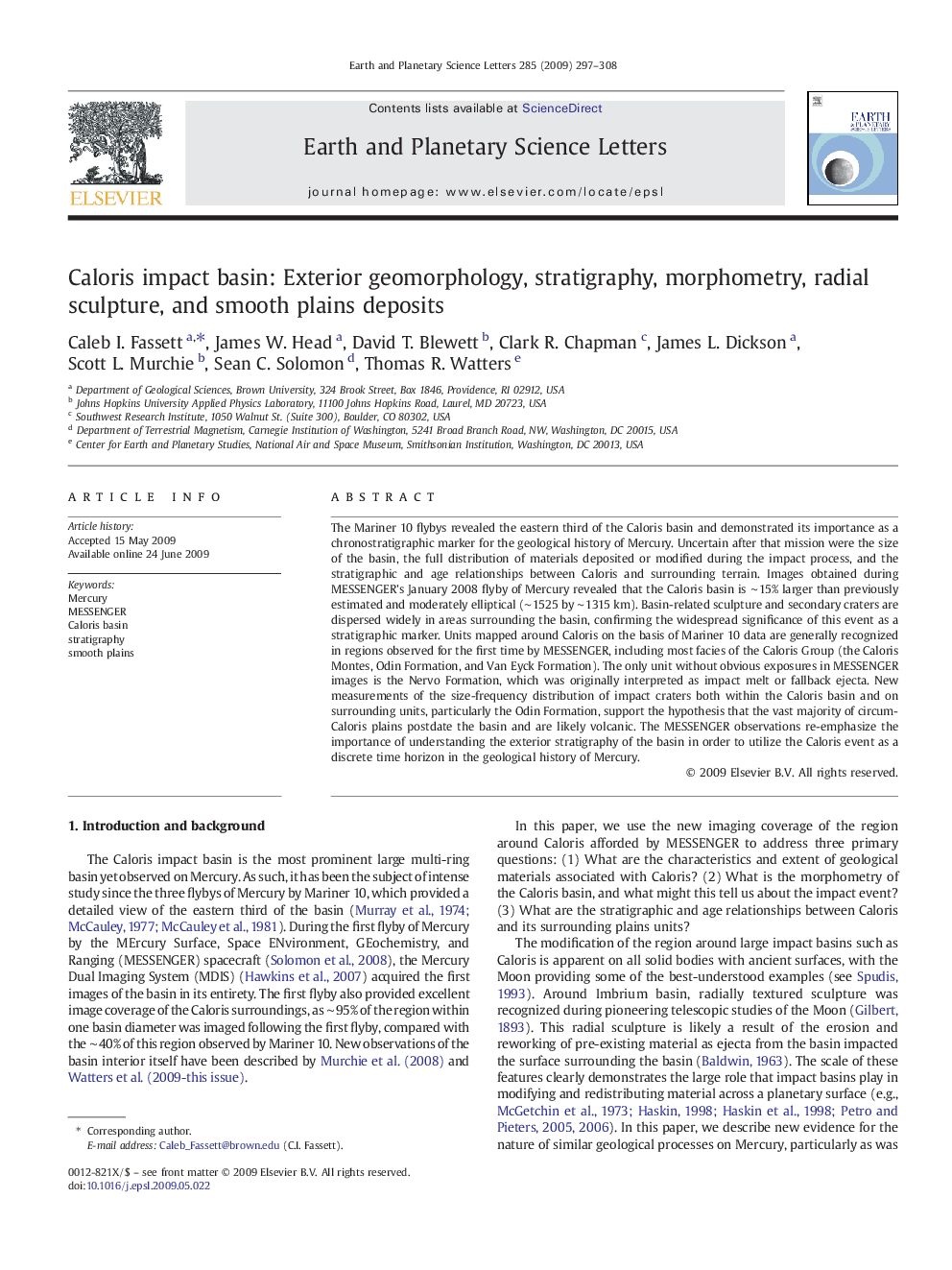| Article ID | Journal | Published Year | Pages | File Type |
|---|---|---|---|---|
| 4678932 | Earth and Planetary Science Letters | 2009 | 12 Pages |
The Mariner 10 flybys revealed the eastern third of the Caloris basin and demonstrated its importance as a chronostratigraphic marker for the geological history of Mercury. Uncertain after that mission were the size of the basin, the full distribution of materials deposited or modified during the impact process, and the stratigraphic and age relationships between Caloris and surrounding terrain. Images obtained during MESSENGER's January 2008 flyby of Mercury revealed that the Caloris basin is ∼ 15% larger than previously estimated and moderately elliptical (∼ 1525 by ∼ 1315 km). Basin-related sculpture and secondary craters are dispersed widely in areas surrounding the basin, confirming the widespread significance of this event as a stratigraphic marker. Units mapped around Caloris on the basis of Mariner 10 data are generally recognized in regions observed for the first time by MESSENGER, including most facies of the Caloris Group (the Caloris Montes, Odin Formation, and Van Eyck Formation). The only unit without obvious exposures in MESSENGER images is the Nervo Formation, which was originally interpreted as impact melt or fallback ejecta. New measurements of the size-frequency distribution of impact craters both within the Caloris basin and on surrounding units, particularly the Odin Formation, support the hypothesis that the vast majority of circum-Caloris plains postdate the basin and are likely volcanic. The MESSENGER observations re-emphasize the importance of understanding the exterior stratigraphy of the basin in order to utilize the Caloris event as a discrete time horizon in the geological history of Mercury.
